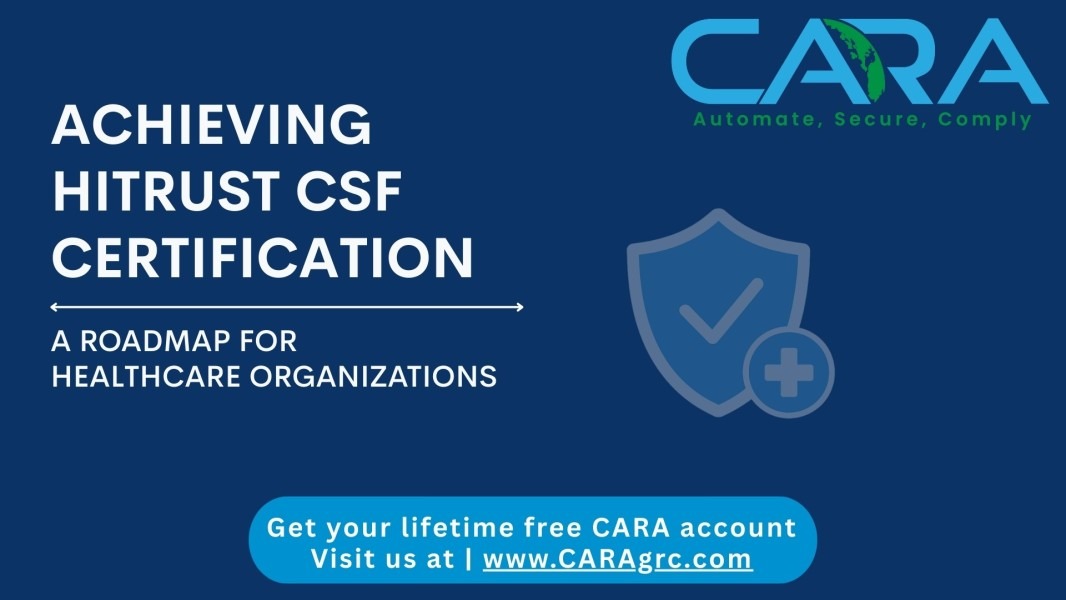Achieving HITRUST CSF Certification: A Roadmap for Healthcare Organizations-
In an era where healthcare data breaches are rising and patient trust is on the line, organizations must demonstrate a strong commitment to information security and compliance. The HITRUST CSF (Common Security Framework) has emerged as a leading standard that helps healthcare providers, insurers, and vendors meet regulatory and risk management requirements in one integrated framework.Achieving HITRUST CSF certification is a significant milestone—it validates your cybersecurity program and signals to stakeholders that your organization meets rigorous standards for protecting sensitive data. But for many healthcare entities, navigating the path to certification can seem overwhelming. This article breaks down the key phases, challenges, and strategies for successfully attaining HITRUST CSF certification.
What is HITRUST CSF?
The HITRUST Common Security Framework is a ce
rtifiable framework that harmonizes widely accepted standards like:
- HIPAA
- ISO/IEC 27001
- NIST 800-53
- PCI DSS
Designed specifically for the healthcare industry, HITRUST CSF provides a comprehensive and scalable approach to managing compliance, risk, and data protection.
It’s used by:
- Hospitals and clinics
- Health tech startups
- Insurance providers
- Business associates and third-party vendors
Why HITRUST CSF Certification Matters-
Healthcare organizations handle large volumes of personally identifiable information (PII) and protected health information (PHI). A single breach can lead to legal penalties, reputational damage, and loss of patient trust.
HITRUST CSF certification:
- Demonstrates commitment to security and compliance
- Reduces audit fatigue by consolidating multiple frameworks
- Enhances third-party trust and partnership opportunities
- Prepares organizations for future regulatory scrutiny
For organizations serving U.S. healthcare providers or payers, HITRUST certification is becoming a de facto requirement.
Challenges on the Road to HITRUST Certification-
Despite its benefits, the certification process presents challenges:
- High documentation and control mapping workload
- Understanding complex requirements across frameworks
- Need for organizational alignment and resource commitment
Common pitfalls include:
- Incomplete risk assessments
- Inconsistent data governance policies
- Lack of automated compliance tracking tools
Roadmap to HITRUST CSF Certification-
Achieving HITRUST certification involves several structured steps:
- Readiness Assessment:
- Review current controls and maturity levels
- Identify gaps in compliance
- Engage stakeholders across IT, legal, and operations
- Remediation Planning:
- Address gaps through updated policies, procedures, and technical controls
- Ensure documentation and evidence are audit-ready
- Validated Assessment:
- Work with a HITRUST Authorized External Assessor
- Submit documentation and evidence for review
- Certification and Continuous Monitoring:
- HITRUST issues certification upon approval
- Maintain continuous compliance through self-assessments and periodic updates
Leveraging RegTech and Compliance Tools-
Like Qatar’s privacy law and ARAMCO CCC in the energy sector, HITRUST underscores the growing importance of Regulatory Technology (RegTech) in healthcare.
Modern compliance management platforms can:
- Map and track controls across frameworks
- Automate evidence collection and pol
- icy enforcement
- Provide real-time compliance dashboards
- Simplify collaboration across departments
These tools not only reduce the cost and complexity of certification but also ensure continuous audit readiness.
Conclusion-
HITRUST CSF certification is more than a checkbox—it’s a strategic initiative that elevates a healthcare organization’s data protection maturity, reduces regulatory risk, and fosters trust with patients and partners. While the path to certification may seem complex, a well-structured roadmap, combined with smart tools and cross-functional collaboration, can make the journey manageable and rewarding.
As the healthcare sector continues to digitize and face rising cybersecurity threats, HITRUST CSF offers a unified path forward—one that aligns security, compliance, and operational excellence.



